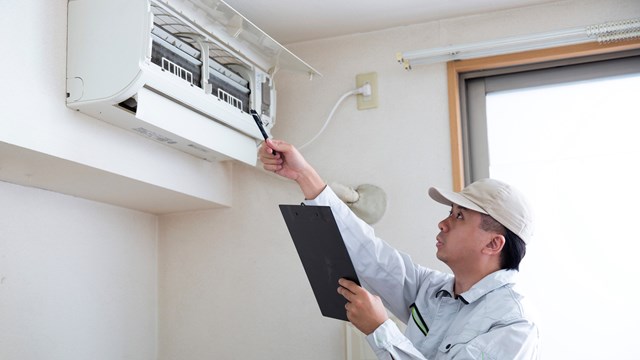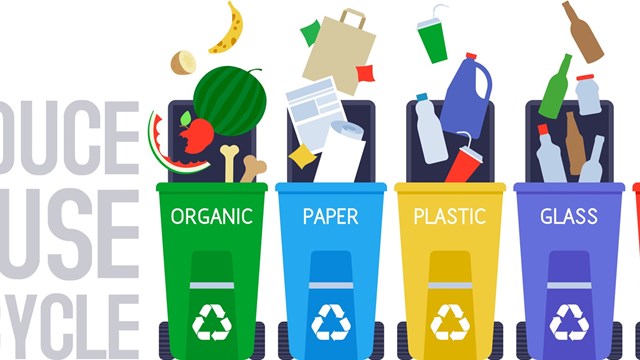When most people hear the term green building, they often think of photovoltaic solar panels, cisterns, wind turbines, or straw bale homes. With these images in mind, it's no wonder that people think green building is a fringe alternative.
But what most people don't understand about green building is that it fundamentally addresses a number of bad building practices that have become business as usual. As consumers, we assume that we get decent value for our money, but this is no longer the case with buildings. When you are ready to buy a new car, you can compare how many miles to the gallon each model will achieve, but when you go to buy a condo, where is that information? The design, construction, and operations of buildings are governed by building codes, but these codes do not insure building system integration or optimized systems, the two strategies that reduce capital costs as well as operating costs and create healthy living spaces.
Smarter Building Brings Better Results
When we think of home, we think of a haven, a safe place to enjoy family and relax from stresses of work and the outside world. At its most basic, a home provides shelter, comfort, and surroundings that are aesthetically pleasing. But over the past 100 years in this country, providing those basics has come at a very high price. Some of the not-so-obvious costs include deforestation, global toxicity, water degradation, and other unintended consequences. By way of example, it's a fact that every single person currently living on the planet has persistent bio-accumulative toxins in their organs and tissues, much of which is a result of industrial processes related to the manufacture of building materials and products. The toxins migrate through the air and water, and include the likes of PVC/vinyl and dioxin, heavy metals, and dyes.
Home should be a place where the needs for shelter and comfort are met without unintended negative consequences to the environment and to the owner's pocketbook. When a home is designed with those issues in mind, the owner benefits from energy savings (easily 30 percent), healthy interiors, and systems that are durable and high performing.
The elements that define a building as green are fundamental and include proper siting and passive design, properly sized mechanical systems, and nontoxic finish materials. They are not exotic or expensive, but they are smarter. One thing that sets green building apart is metrics: once you measure something, you can make decisions in a different way. Green buildings are designed with measured outcomes in mind. The Enterprise Foundation, a national nonprofit organization, has been funding affordable housing projects and has been measuring the benefits across 915 of their projects over several years. The results of their study have been, in a word, startling. Compared to traditional construction, green homes prevent the following amounts of greenhouse gases from being released annually:
4,300 tons carbon dioxide
25,000 pounds sulfur dioxide
9,100 pounds nitrogen oxide
These projects also saw economic benefits, including reductions in energy costs that translated to:
$38/month savings per unit
$450/year savings per unit
$411,750/year savings for a small community
$12.4 million saved over 30 years
What Is Green?
There are three things that differentiate green design from traditional building:
To be an educated consumer, it's important to take the time to inform yourself about what makes a product or system green. Toxicity, energy conservation, recycled content and recyclability, local sourcing and water conservation are all things to consider.
Green Isn't Limited to New Construction
Green building practices are relatively easy to integrate into designs for new buildings, but it is important to consider integrating the technology into existing building operations and maintenance as well. In existing buildings, the highest priorities are moisture control and energy conservation. Leaky plumbing, poor foundations, improperly sealed openings in walls and air-conditioning systems are all danger zones for moisture intrusion that can lead to mold. Energy conservation requires comprehensive air sealing of the building envelope, together with properly controlled ventilation.
To assess opportunities for upgrades over time, condominium associations should consider commis- sioning an audit of the entire property. An overall energy audit will evaluate the building envelope and the mechanical and plumbing systems. With the results of the audit in hand, an association can assess the life cycle cost of each element in order to make decisions about how to prioritize upgrades. Easy energy targets include swapping out incandescent bulbs for compact fluorescents, insulating hot water heaters, and weatherizing to stop air leaks.
In a context of a condominium, the ability to look across systems and realize savings and improvements is of greater importance. And in a condominium, scale works to the condominium's favor: the larger scale of efficiencies across condominiums will make upgrades more attractive than installing them one by one in individual units. Water conservation, for instance, is an easy goal to achieve. Installing efficient showerheads, faucets, and toilets can easily reduce water consumption by 25 percent. Indoor air quality is impacted by paints, adhesives, and finish materials, all of which offgas volatile organic compounds that are most recognizable in a "new home" smell. But there are cost-comparable non-toxic alternatives to all of these toxic choices. Once you have a healthy interior, using non-toxic cleaning fluids becomes even more important.
Yet another strategic approach is to review the purchasing guidelines set by your association and to prioritize items that are healthy and efficient. For a list of all green products, the number one resource is www.buildinggreen.com. The site includes a Greenspec list that is unbiased and similar to
A Movement Gains Momentum
Green building is gaining momentum as people realize the value and benefits of the approach. As consumers, you should not settle for business as usual and you should be demanding healthy and efficient condominiums. You do not need to compromise your health or throw away money unnecessarily in order to live in a comfortable home! Homeowners are the most important market driver, and the more demand increases, the more the market will respond. The simple laws of supply and demand will impact everything from products and materials to developers.
Developers are beginning to go green for three different reasons. First, green building requirements are beginning to pop up around the country. Boston, the first city in the United States to require green building of the private sector, has spurred other cities to look at adopting similar requirements. Second, in different markets in the country there is a value to green building, and smart developers are recognizing that a response to the emerging trend is a way to differentiate their product. Third, savvy developers understand that green building is a way to realize efficiencies and control costs that are better than the efficiencies offered by conventional building. Production builders realize this, and developers of retirement communities are seeing this as well, especially as towns and cities are beginning to push for green building. But the benefits of green building are clear to everyone connected to a green structure. Owners benefit directly from reduced energy costs and healthy indoor air that is free of the toxins found in everyday materials such as cabinetry and carpet. When careful attention is paid to passive design, integrated building systems, and right-sizing equipment and controls, property managers benefit from fewer complaints and more durable and better performing systems.
As more people learn that energy efficiency and health are not a guarantee of traditional building, they are turning to green building. If green building appeals to you, the first thing to do is get educated, to learn what the issues are, what critical questions to ask, and how to make smart choices. And once you are educated, pass it on! You'd be surprised how many people get excited about green building once they learn how they can make simple changes in their own lives. We need to make home our refuge and not part of the problem. Living green is an easy first step to getting there.






Leave a Comment